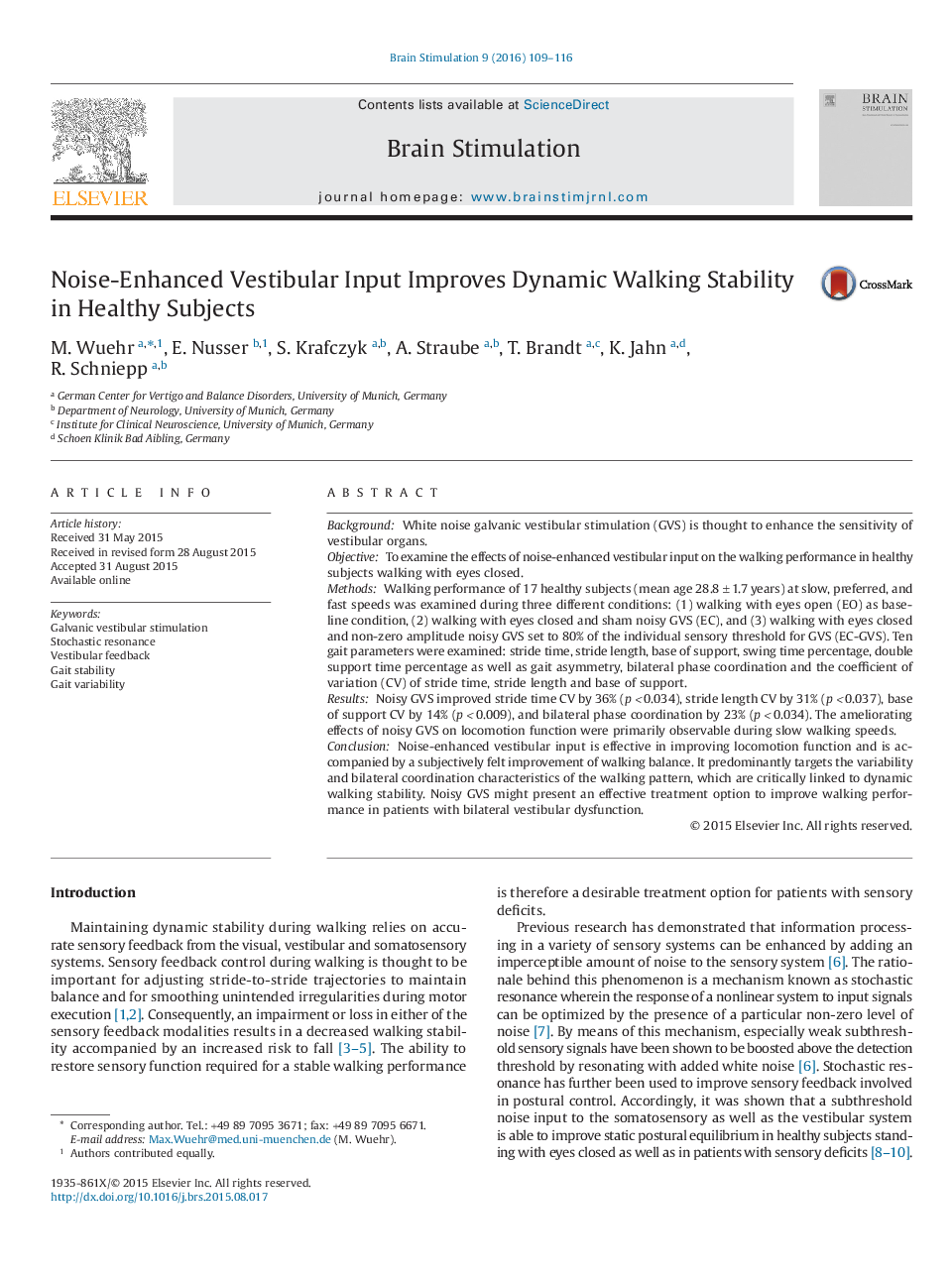| کد مقاله | کد نشریه | سال انتشار | مقاله انگلیسی | نسخه تمام متن |
|---|---|---|---|---|
| 6005125 | 1184659 | 2016 | 8 صفحه PDF | دانلود رایگان |

- We examine the effects of white noise galvanic vestibular stimulation (GVS) on the walking performance in healthy subjects.
- We demonstrate that during walking a considerable amount of vestibular inputs is below vestibular detection thresholds.
- Noisy GVS, which is thought to enhance detection of subthreshold vestibular inputs, effectively improves locomotion function.
- Noisy GVS predominantly improves characteristics of the walking pattern, which are linked to dynamic walking stability.
- Noisy GVS improves locomotion function in a speed-dependent manner predominately during slow walking modes.
BackgroundWhite noise galvanic vestibular stimulation (GVS) is thought to enhance the sensitivity of vestibular organs.ObjectiveTo examine the effects of noise-enhanced vestibular input on the walking performance in healthy subjects walking with eyes closed.MethodsWalking performance of 17 healthy subjects (mean age 28.8â±â1.7âyears) at slow, preferred, and fast speeds was examined during three different conditions: (1) walking with eyes open (EO) as baseline condition, (2) walking with eyes closed and sham noisy GVS (EC), and (3) walking with eyes closed and non-zero amplitude noisy GVS set to 80% of the individual sensory threshold for GVS (EC-GVS). Ten gait parameters were examined: stride time, stride length, base of support, swing time percentage, double support time percentage as well as gait asymmetry, bilateral phase coordination and the coefficient of variation (CV) of stride time, stride length and base of support.ResultsNoisy GVS improved stride time CV by 36% (pâ<â0.034), stride length CV by 31% (pâ<â0.037), base of support CV by 14% (pâ<â0.009), and bilateral phase coordination by 23% (pâ<â0.034). The ameliorating effects of noisy GVS on locomotion function were primarily observable during slow walking speeds.ConclusionNoise-enhanced vestibular input is effective in improving locomotion function and is accompanied by a subjectively felt improvement of walking balance. It predominantly targets the variability and bilateral coordination characteristics of the walking pattern, which are critically linked to dynamic walking stability. Noisy GVS might present an effective treatment option to improve walking performance in patients with bilateral vestibular dysfunction.
Journal: Brain Stimulation - Volume 9, Issue 1, JanuaryâFebruary 2016, Pages 109-116